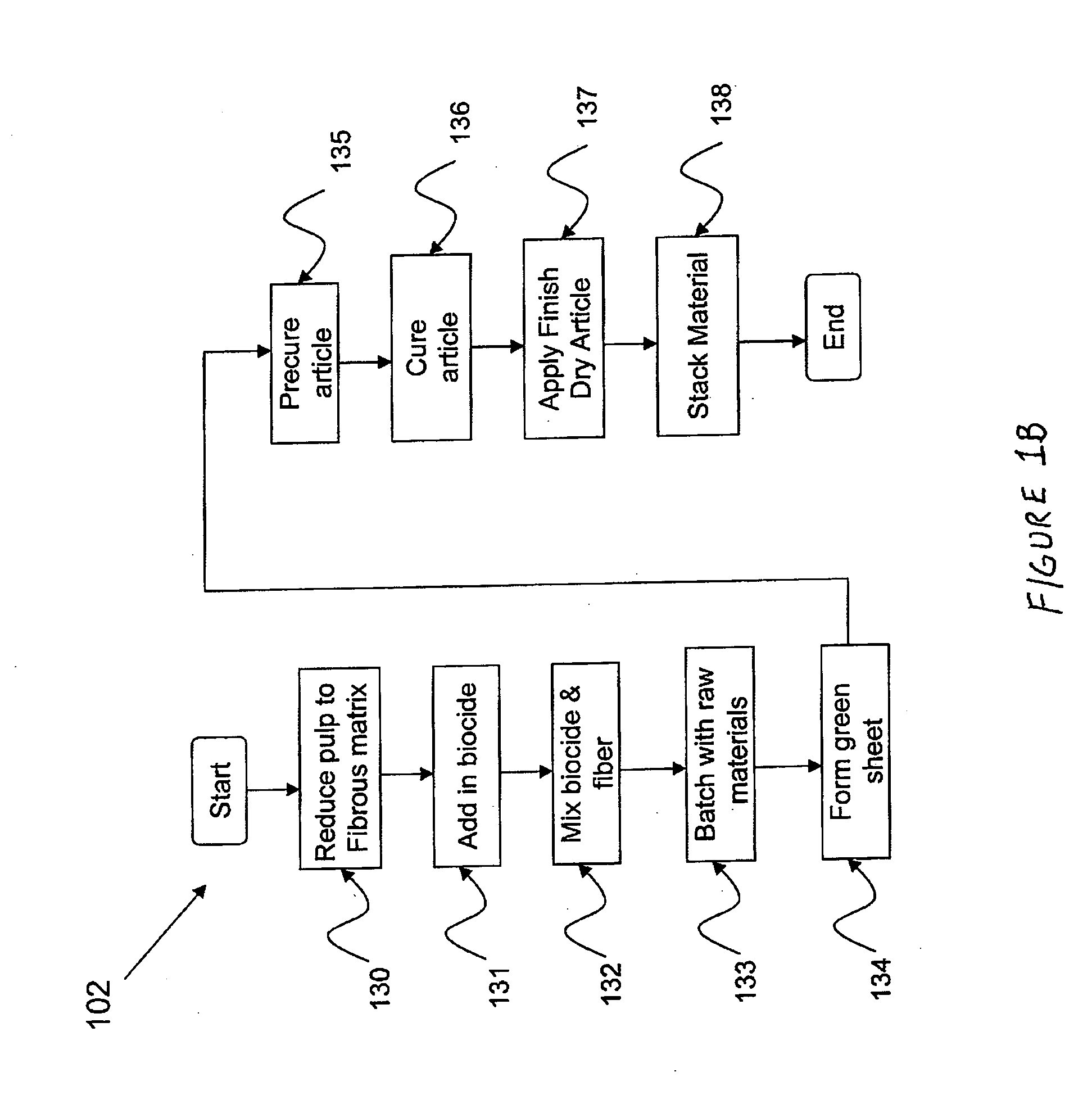Building materials with bioresistant properties
- Summary
- Abstract
- Description
- Claims
- Application Information
AI Technical Summary
Benefits of technology
Problems solved by technology
Method used
Image
Examples
Embodiment Construction
[0021] Certain preferred embodiments of the present invention provide a building article that incorporates a biocide which renders the building article substantially resistant to mold growth, including formulations and methods for making such an article. The mold resistant building article can include both interior and exterior building products such as tile backer boards, cladding, trim, roofing, fencing, fascia, soffits, sheathing, and the like.
[0022] The biocide properties are preferably imparted to the building article by one or more general methods. The methods include (1) applying a surface treatment containing a biocide to the article; (2) incorporating a biocide into an admixture which is directly batched into the mixture to form the article; and (3) treating a component of the article, such as reinforcement fibers, with a biocide. Each of these methods will be described in greater detail below.
[0023] Surface Treatment
[0024] The biocide can be imparted to the building art...
PUM
| Property | Measurement | Unit |
|---|---|---|
| Length | aaaaa | aaaaa |
| Fraction | aaaaa | aaaaa |
| Fraction | aaaaa | aaaaa |
Abstract
Description
Claims
Application Information
 Login to View More
Login to View More - R&D
- Intellectual Property
- Life Sciences
- Materials
- Tech Scout
- Unparalleled Data Quality
- Higher Quality Content
- 60% Fewer Hallucinations
Browse by: Latest US Patents, China's latest patents, Technical Efficacy Thesaurus, Application Domain, Technology Topic, Popular Technical Reports.
© 2025 PatSnap. All rights reserved.Legal|Privacy policy|Modern Slavery Act Transparency Statement|Sitemap|About US| Contact US: help@patsnap.com



